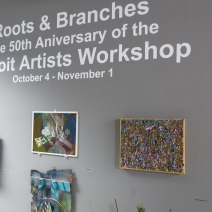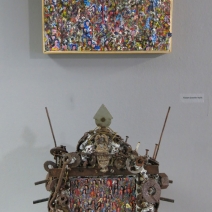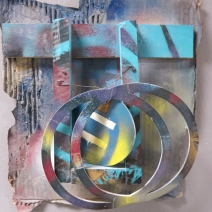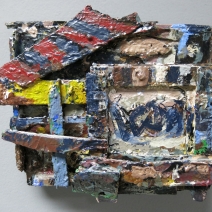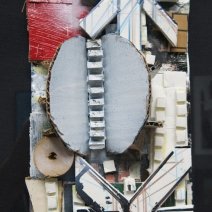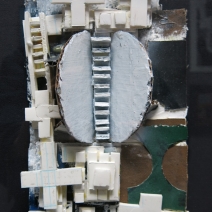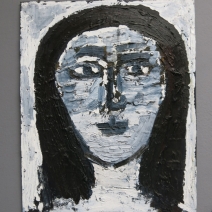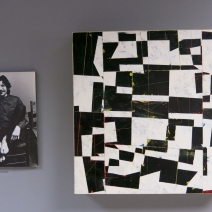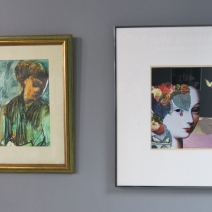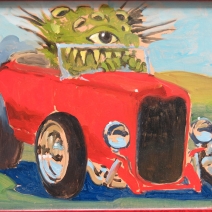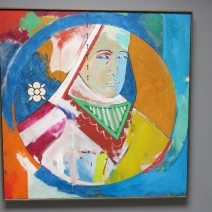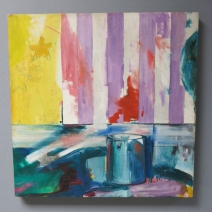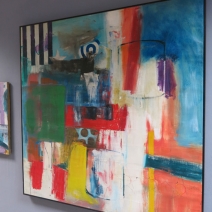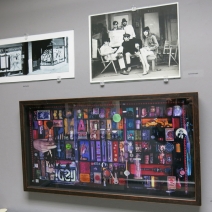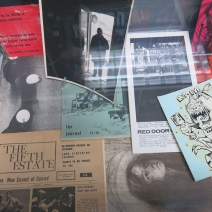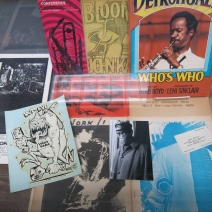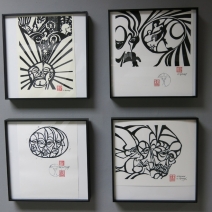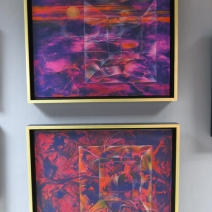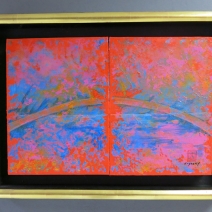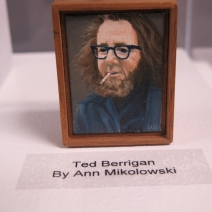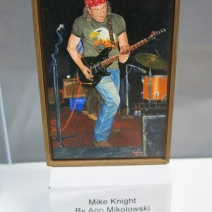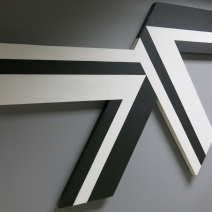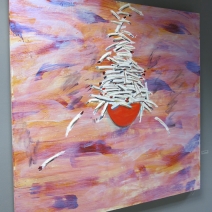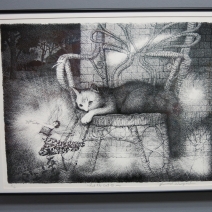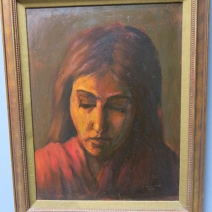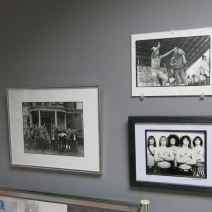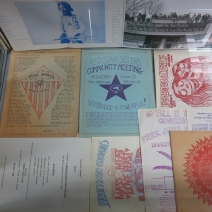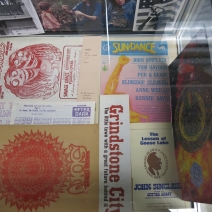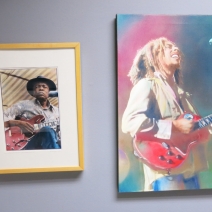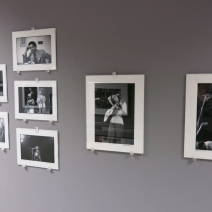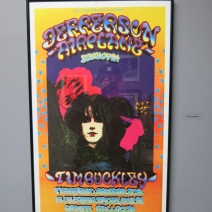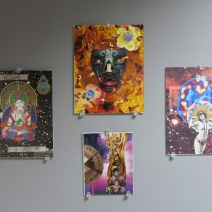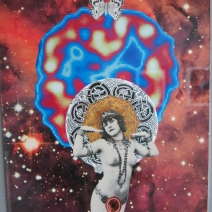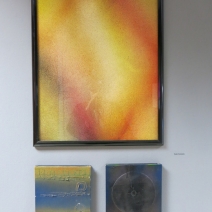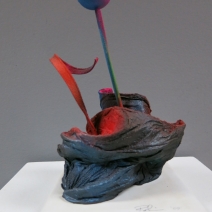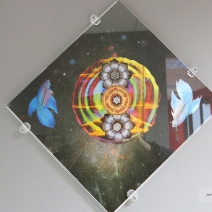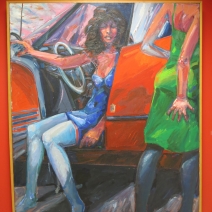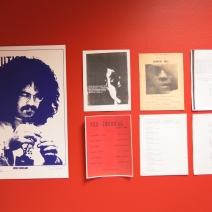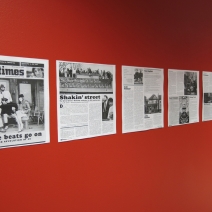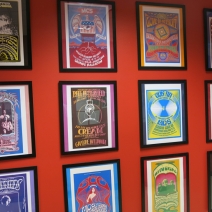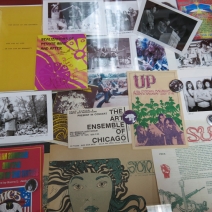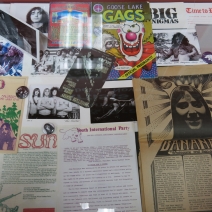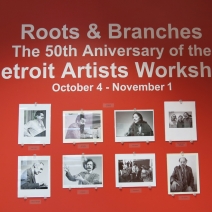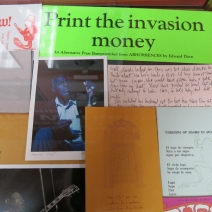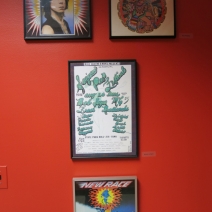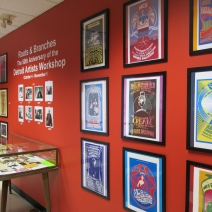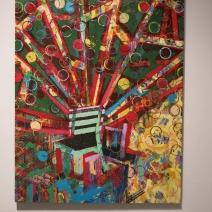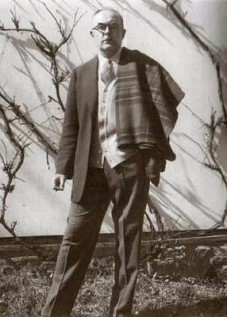Roots & Branches; DAW Exhibition at CCS
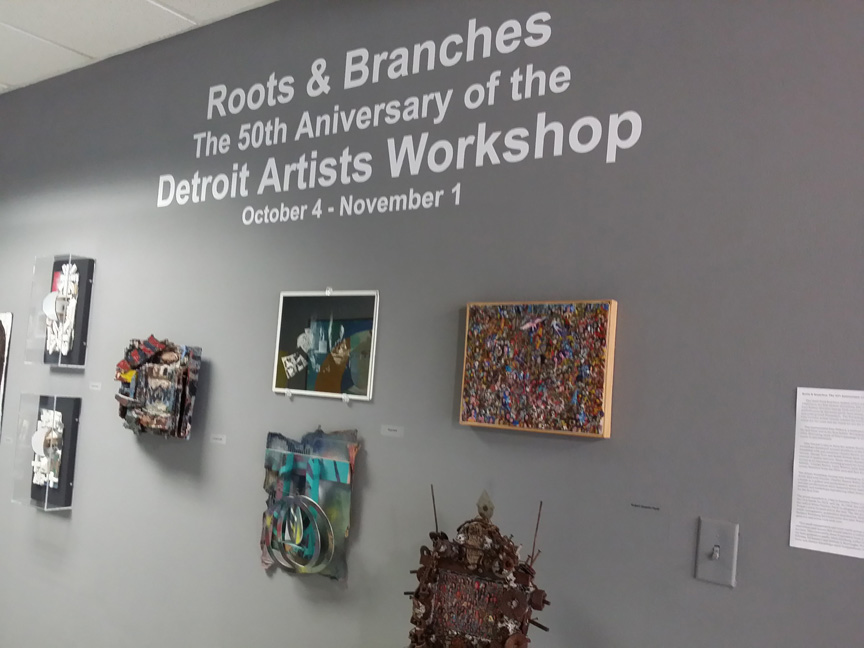
Roots & Branches: The 50th Anniversary of the Detroit Artists’ Workshop
The short-lived Red Door Gallery (1963-64) and Detroit Artists’ Workshop Society (1964-1966), were the first serious alternative, DIY, avant-garde and co-op galleries to exist in Detroit. Red Door gallery directors Geroge Tysh and Carl Schurer introduced avant-garde concepts through performances by the Once Group, and featured local poets, musicians, artists and underground filmmakers. Pop expressionist Eizo Nishiura, a mathematics professor at Wayne State exhibited both at the Red Door and at the first Artists’ Workshop space, which burned down on memorial day in 1965, destroying many of Eizo’s paintings in the fire. We were lucky to locate three of his works vintage works for this exhibition.
The idea to form the Artists Workshop Society was drawn from many sources; including friendships developed around the Red Door collective—especially John Sinclair’s close friendship with jazz musician Charles Moore and future wife Magdalene Arndt AKA Leni Sinclair. George Tysh and Robin Eichele both came from Montieth College with a strong interest in poetry and jazz. Music formed a common ground – and became a focal point at the DAW. “The Artists Workshop served as an important meeting ground for musicians and other artists from the city,” said Sinclair, “Charles Moore, Larry Nozero, John Dana, James Semark—with outstate natives like Lyman Woodard from the Flint area and Ron English and Danny Spencer from Lansing”.
The Artists Workshop Society was founded on November 1st, 1964 by John Sinclair, Magdelene Arndt AKA Leni Sinclair, Charles Moore, Robin Eichleay, George Tysh and ten others, who rented a house as a gallery and performance space on the campus of Wayne State University. Poetry and Jazz performances were featured every Sunday. They also produced their own books, journals and workshops introducing other avant-garde poets and musicians to Detroit, many for the first time.
The group morphed in 1966 to become Trans Love Energies; a collective that would include the rock bands the MC5, and Up. In 1968, the collective moved to Ann Arbor, MI and formed the radical White Panther Party in allegiance with the Black Panthers. In 1971, The Rainbow People’s party formed and in the mid ‘70s, the group returned to Detroit and continued in music management, publication distribution, design and cultural archiving. The photographs of Barbara Weinberg Barefield cover this later Rainbow People’s era as music changed into the glam era and arena rock took over.
This small independent and inter-racial group of writers, artists and musicians were the seed artists and spaces that would inspire a cultural revolution in Detroit and beyond. This community drew inspiration from a diverse collection of writers, most notably the beat generation poets; Allen Ginsberg, LeRoi Jones (Amiri Baraka), Robert Creeley, Diane DiPrima, Ed Sanders and William S. Burroughs. Poet Charles Olson’s key essays on Projective Verse and Human Knowledge were fountainhead resources.
The influence and connective threads that came out of the Artists’ Workshop is a massive web that stretches from jazz to rock, psychedelic poster art to heavy metal, noise and other experimental music, as well as contemporary poetry and the growth of Detroit’s new alternative presses. The AWS press was one of the most notorious mimeo press journals in the country; known for its mammoth size and serious jazz articles.
The Cass Corridor movement was significantly inspired by actions started at the DAW – many of the Cass group of artists defined themselves by the revolutionary politics and musical expression forged at the DAW. The Cass Corridor’s artworks are emblematic of how a city on the verge of collapse expresses itself; art, poetry and industrial decay merged together in a unified storm of the ‘60s and ‘70s that saw expression in the raw avant-rock of the MC5, Detroit’s psychedelic palace – the Grande Ballroom and the anti-pop assemblages of Gordon Newton. In Detroit the borders of culture fused into a mass of energetic expression.
Art, poetry and music were a way out of the confusion and “American Dream” nobody wanted —a way of saving yourself. Members of the DAW also took on serious spiritual pursuits. James Semark, Howard Weingarden and others members were UFO watchers, practiced esoteric religions at the highest levels, played world music and traveled to India for enlightenment. Semark brought Michio Kuchi to Detroit and published the first book on Macrobiotics on the workshop press. Some members broke off into splinter groups emphasizing spirituality and the mind-body connection.
Artist designer Gary Grimshaw best exemplifies the passion and commitment to the arts community as he became the voice and conscience of the DAW collective throughout its years of transformation. His posters and designs gave the Grande Ballroom its soul and the MC5 a powerful image-identity. They were all close friends in it together. Rob Tyner, Emil Bacilla and Grimshaw all grew up together in Lincoln Park and the MC5 grew out of these friendships.
Photographer Leni Sinclair was present before the Workshop and a quiet but central force during its early years. Leni remained the chief documentarian of the DAW and her photographic archive is one of the great cultural treasures of Detroit.
The DAW was politicized in the beginning, as police surveillance, the Detroit Red Squads and infiltration became the norm. Founder John Sinclair was set up and arrested three times for marijuana violations and did 2 ½ years in jail until the Free John Now concert at Chrysler arena featuring John Lennon and Yoko Ono helped to set him free.
The Artworks in Roots & Branches include photographers Barbara Weinberg Barefield, Leni Sinclair and Emil Bacilla. More than any other kind of artwork, the photographs give you a true feeling for the time. They tell a story from the inside out. Other Artists represented include; Stanley “Mouse” Miller, Carol Wald, Bradley Jones, Joey Cavenaugh, Nancy Mitchnick, Gary Grimshaw, John Egner, Paul Schwartz, Jerry Younkins, Carl Lundgren, Michelle Lundgren, Cay Bahnmiller, Barry Roth, Robert Hyde and Gordon Newton.
The main gallery at CCS features the art of Gilda Snowden (1954-2014), an important mentor, artist and teacher at the art school. Her sudden death just a few weeks before, came as an unforeseen shock for her family and the surrounding arts community. Gilda was a beloved artist with deep ties to Detroit, who grew up surrounded by the milieu of the Artists Workshop and Cass Corridor — her last work was a brilliant electric celebration of those connections, drawing from many local sources and her uniquely earthy hands-on approach. This exhibit is a small testament to these connections and threads — the roots and branches — and music that fed us all.
It is now critical and relevant at this point in Detroit’s recent revival of the arts, to shed some light on the DAW, to look back where we came from. “Brothers and Sisters come together,” said Rob Tyner. In these high-tech times, a 50th anniversary is monumental – a time to stop and look, to celebrate our past and the city’s artistic roots within the framework of the Artists’ Workshop. To understand the arts of Detroit, there’s no better place to start.
This exhibition is not meant to be a definitive guide or survey. Many of the connections made in “Roots and Branches” are choices that reflect personal interests and preferences. Part two of this exhibition will continue at Mike Kelley’s Mobile Homestead, (the house behind MOCAD) opening on October 26th. Both exhibits will overlap slightly, and allow us to view a wider variety of objects and productions made directly by the DAW and its related offshoots. It will give us time to talk about and discuss the workshop– to see the roots and branches of a distinct time and character. I’d like to thank the artists and lenders who made this exhibition possible, and to Michelle Perron and CCS for allowing us a space to see it.
–Cary Loren c/o DAW
Read more about the DAW at: https://www.detroitartistsworkshop.com/
Tags: College for Creative Studies, Detroit Artists Workshop, Roots & Branches

